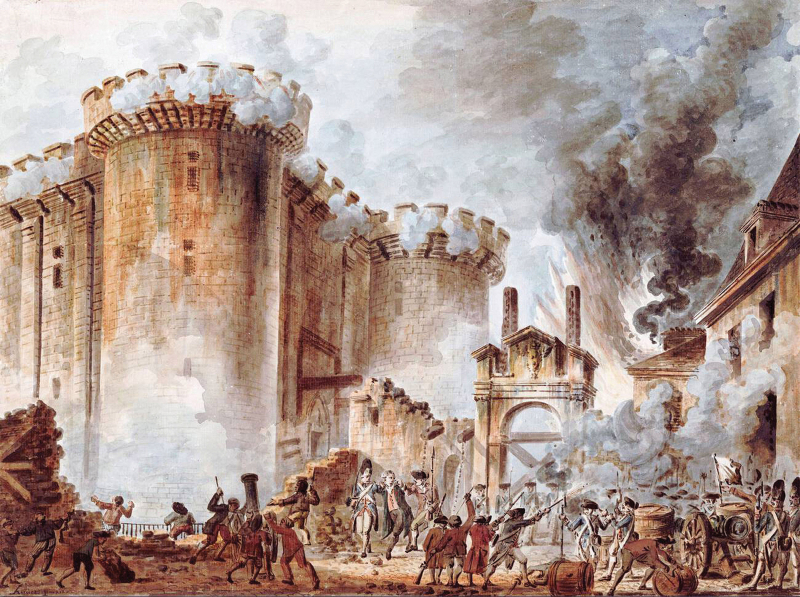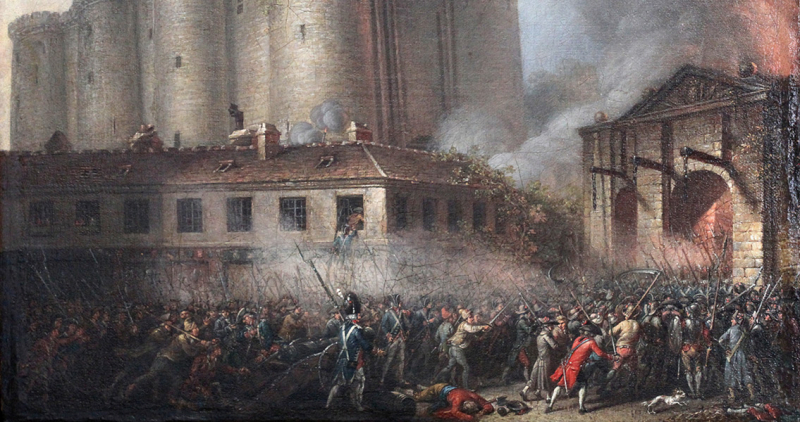Storming of the Bastille
On July 14, the Bastille's governor, Bernard-René de Launay, watched in dread as a sizable and expanding crowd of enraged revolutionaries surrounded the fortress. He invited representatives of the revolution inside to negotiate after receiving a demand to surrender.
He allegedly received them warmly and pledged not to open fire despite the lack of any direct orders from Louis XVI. However, as the discussions dragged on, the crowd outside became restless; some may have believed their delegates were being held captive.
Eventually, a group of men scaled an outer wall and lowered a drawbridge into the courtyard of the Bastille, allowing the crowd to swarm inside. De Launay broke his promise and ordered his soldiers to shoot when men attempted to lower a second drawbridge. The onslaught killed nearly 100 attackers and injured dozens more, while the royalists lost only one soldier.










